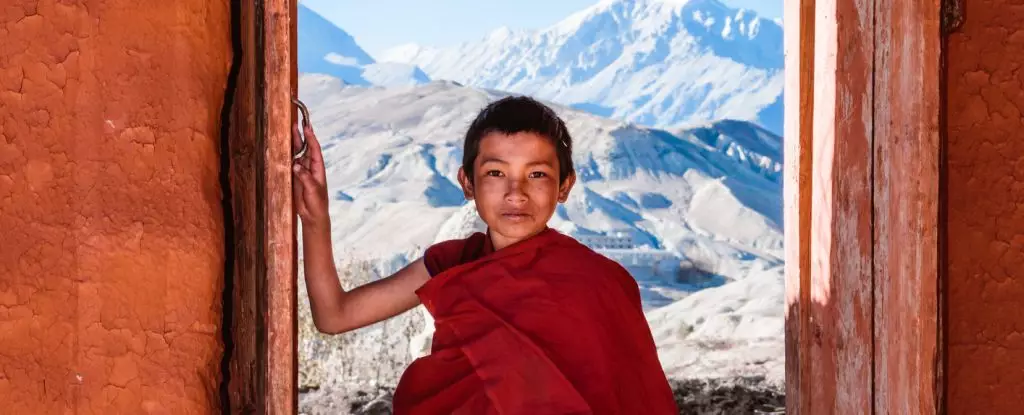Human evolution is a tale as old as time, an ever-unfolding narrative that encompasses adaptation, survival, and resilience. Our species has always been defined by its ability to face challenges head-on, and one of the most compelling examples lies far above sea level—the Tibetan Plateau. While some may find the thought of high altitudes daunting due to reduced oxygen levels, the Tibetan people have not only adapted but excelled under these conditions. This remarkable phenomenon underscores not only the durability of the human body but also the intricate dance between genetics, environment, and reproductive success.
The Mountain as an Ally or Adversary?
Climbing high peaks often comes with daunting physical consequences, even for the fittest of athletes. Altitude sickness, manifesting as headaches, nausea, and more severe complications, is a stark reminder of how unforgiving nature can be. Yet, in a region where the air is thin and atmospheric pressure is significantly decreased, communities have thrived for over ten millennia. This stark contrast raises important questions: How do these populations circumvent the detrimental effects typically associated with high altitudes? What biological changes have been inscribed in their DNA over generations?
Anthropologist Cynthia Beall has delved deep into this enigma, researching adaptations among Tibetan populations that enable them to flourish where others falter. Her findings shed light on not just survival but a profound example of how environmental pressures shape human biology and contribute to evolutionary fitness.
Natural Selection’s Intricate Mechanisms
Imagine a woman living in the thin air of the Tibetan plateau, navigating the rigors of pregnancy and childbirth with an innate advantage. Beall’s research indicates that in an environment defined by oxygen scarcity, the reproductive success of these women is grounded not simply in resilience but in specific physiological traits that enhance oxygen delivery throughout the body. This phenomenon exemplifies natural selection, where reproductive success serves as a marker for evolutionary fitness, favoring traits that allow for survival and the perpetuation of the species.
The study involved a remarkable cohort of 417 Nepalese women, all of whom spent their lives at altitudes greater than 3,500 meters (11,480 feet). Measurements taken included live births, health data, and physical metrics, such as hemoglobin levels—the protein in red blood cells essential for oxygen transport. Surprisingly, the highest rates of live births emerged from women with hemoglobin levels that fell within an optimal range, indicating that balance, rather than extremes, is the key to thriving in such harsh environments.
The Oxygen Paradox: Finding the Sweet Spot
Initially, it was understood that higher levels of hemoglobin could be beneficial for oxygen distribution. Yet Beall’s findings reveal that it’s not merely about quantity but quality and balance. Women who managed to deliver many live births did so with a moderate amount of hemoglobin but with exceptionally high oxygen saturation levels. This subtlety—maximizing oxygen delivery without a proportional increase in blood viscosity—serves as a fascinating example of how the human body can innovate and adapt over time.
This intricate dance maximizes the efficiency of oxygen transport, reducing the heart’s workload while enhancing overall fitness. Even more intriguing is the finding that increased blood flow to the lungs and an enlarged left ventricle—as observed in these women—further bolsters oxygen delivery. These physiological adaptations work in concert to facilitate a life of endurance in an otherwise inhospitable climate.
The Impact of Culture on Evolution
While physiological traits are central to understanding survival, cultural factors play an equally vital role in shaping reproductive success among Tibetan communities. Early marriage and frequent pregnancies amplify the likelihood of live births, offering a fascinating layer of complexity to the findings. Women who start families at younger ages maintain longer exposure to reproductive opportunities, leading to a greater number of successful births.
Even in the face of these cultural influences, the underlying biological adaptations remain crucial. The most successful reproductive profiles align closely with traits typically seen in women from lower altitudes, exemplifying how adaptability is a multifaceted interplay between culture and biology.
Continued Evolution: The Human Story in Progress
The study of Tibetan adaptations is a powerful reminder that evolution is an ongoing process. Social and environmental pressures continue to shape our species, leaving profound imprints on our physiology. As Beall aptly puts it, this represents a case of persistent natural selection, demonstrating that even in an age dominated by technology and modern conveniences, we are still intimately intertwined with the raw forces of our environment. In a world where change is the only constant, the pioneers of the Tibetan Plateau remind us that human resilience knows no bounds.


Leave a Reply